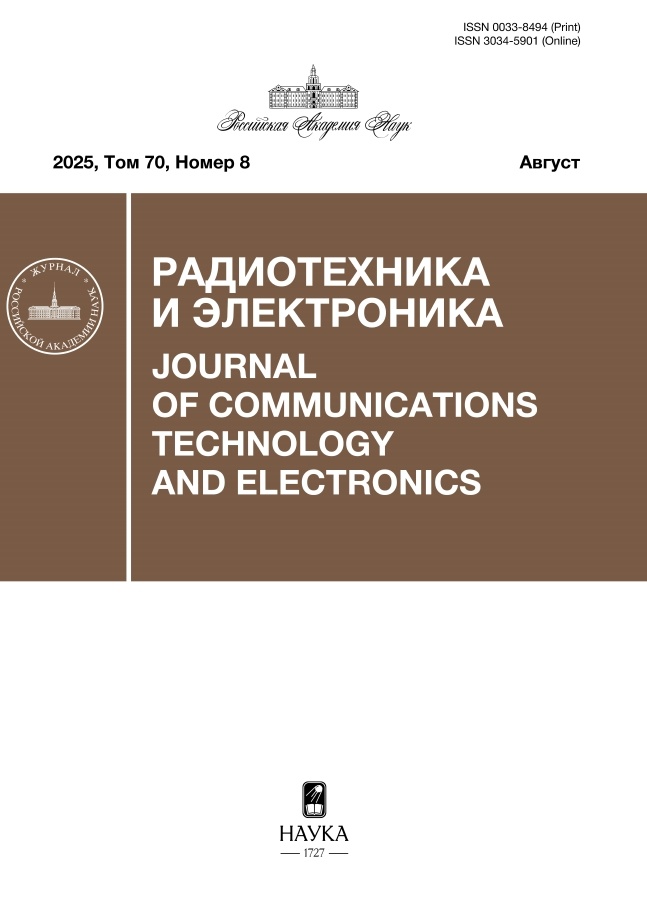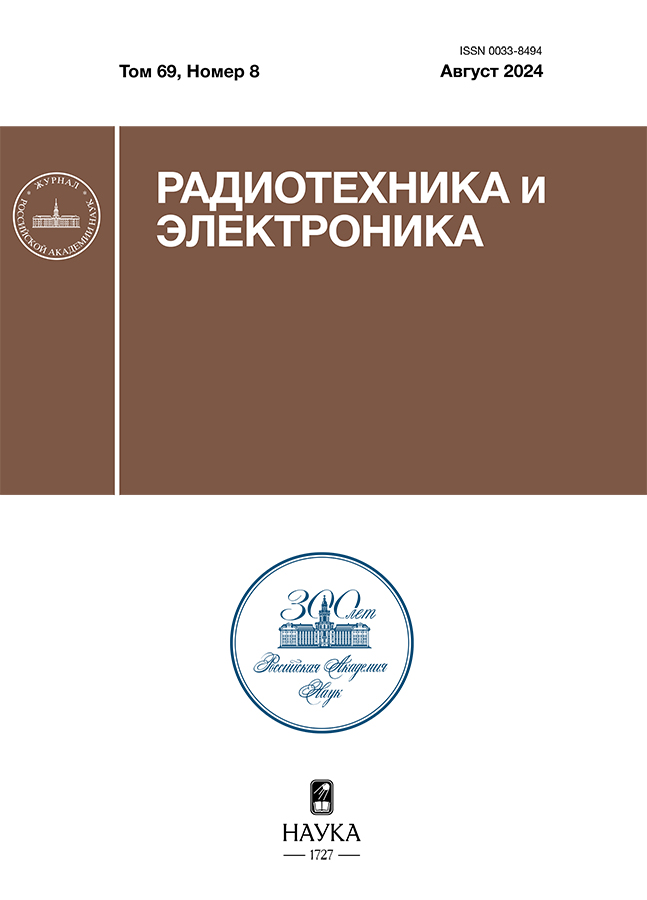Адаптация порогов обнаружения по результатам межобзорного накопления радиолокационных сигналов на фоне негауссовских шумов
- Авторы: Кошелев В.И.1, Белокуров В.А.1
-
Учреждения:
- Рязанский государственный радиотехнический университет им. В.Ф. Уткина
- Выпуск: Том 69, № 8 (2024)
- Страницы: 802-808
- Раздел: К 90-ЛЕТИЮ М.С. ЯРЛЫКОВА
- URL: https://rjmseer.com/0033-8494/article/view/684811
- DOI: https://doi.org/10.31857/S0033849424080106
- EDN: https://elibrary.ru/HNTNLE
- ID: 684811
Цитировать
Полный текст
Аннотация
Предложен алгоритм стабилизации уровня ложной тревоги, основанный на аппроксимации плотности распределения вероятностей отсчетов решающей статистки при межобзорном накоплении на фоне шумов, описываемых распределениями Релея и Вейбулла. Показано, что предлагаемый алгоритм стабилизации уровня ложной тревоги адаптивен и инвариантен к закону распределения шума.
Полный текст
Об авторах
В. И. Кошелев
Рязанский государственный радиотехнический университет им. В.Ф. Уткина
Email: belokurov.v.a@rsreu.ru
Россия, ул. Гагарина, 59/1, Рязань, 390005
В. А. Белокуров
Рязанский государственный радиотехнический университет им. В.Ф. Уткина
Автор, ответственный за переписку.
Email: belokurov.v.a@rsreu.ru
Россия, ул. Гагарина, 59/1, Рязань, 390005
Список литературы
- Сосулин Ю.Г. Теория обнаружения и оценивания стохастических сигналов. М.: Советское радио, 1978.
- Ширман Я.Д., Манжос В.Н. Теория и техника обработки радиолокационной информации на фоне помех. М.: Радио и связь, 1981.
- Arnold J. // IEEE Trans. 1993. V. AES-29. № 1. Р. 44.
- Бакулев П.А. Радиолокационные системы. М.: Радиотехника, 2015.
- Финкильштейн М.И. Основы радиолокации. М.: Радио и связь, 1983.
- Serine M. Weibull Radar Clutter. L.: Peter Peregrinus Ltd, 1990.
- Watts S. Sea Clutter: Scattering, the K Distribution and Radar Performance. L.: The Institution of Engineering and Technology, 2006.
- Марковская теория оценивания случайных процессов / Под ред. М.С. Ярлыкова. М.: Радио и связь, 1993.
- Радиоэлектронные комплексы навигации, прицеливания и управления вооружением летательных аппаратов. Т. 2. Применение авиационных радиолокационных комплексов при решении боевых и навигационных задач / Под ред. М.С. Ярлыкова. М.: Радиотехника, 2012.
- Johnson L. // IEEE Trans. 2002. V. AES-38. № 1. P. 228.
- Tonissen S. M., Evans R. J. // IEEE Trans. 1996. V. AES-32. № 10. P. 1440.
- Yi W. // IEICE Trans. Commun. 2013. V. 16. № 1. P. 291.
- Belokurov V.A., Koshelev V.I., Kagalenko M.V.// Proc. 2019 8nd Mediterranean Conf. on Embedded Computing (MECO). Budva. 10-14 Jun. N.Y.: IEEE, 2019. Paper No. 8760010.
- Кошелев В.И., Белокуров В.А. // Цифровая обработка сигналов. 2018. № 4. С. 50.
- Gumbel E. J. Statistics of Extremes. N.Y.: Mineola, 2000.
- Guida M., Iovino D., Longo M. // IEEE J. Selected Areas Commun. V. 6. № 1. 1988.
- Лихарев В.А. Цифровые методы и устройства в радиолокации. М.: Сов. радио, 1973.
- Coles S. An Introduction to Statistical Modeling of Extreme Values. L.: Springer, 2001.
- Castillo J. Estimation of Generalized Pareto Distribution. Statistics and Probability Letters. N.Y.: Elsevier, 2009.
- Cowan G. Statistical Data Aanalysis. Oxford: Oxford Univ. Press, 1998.
Дополнительные файлы

















